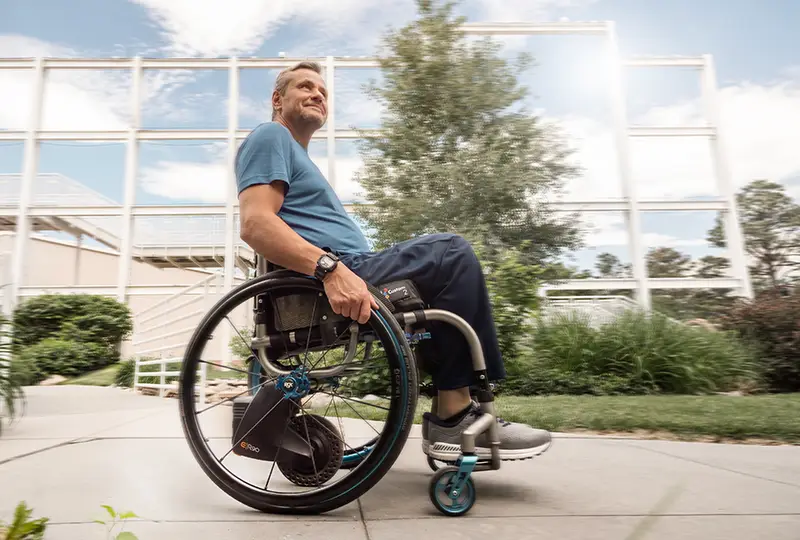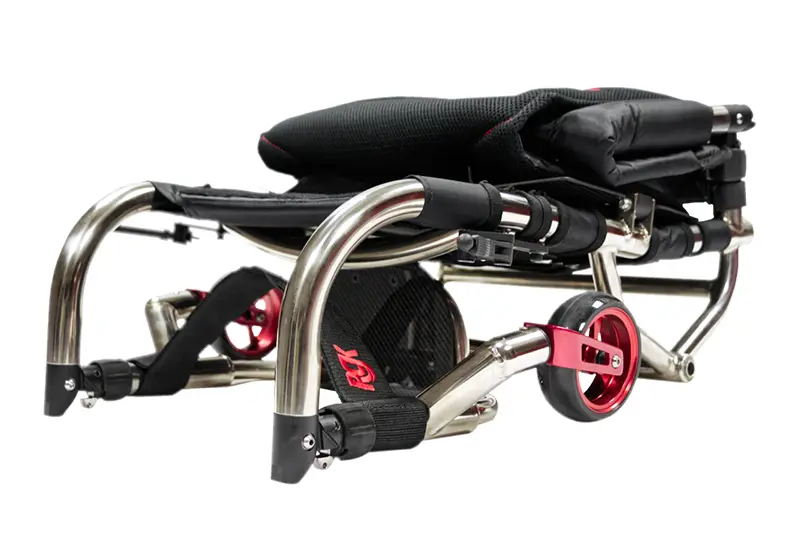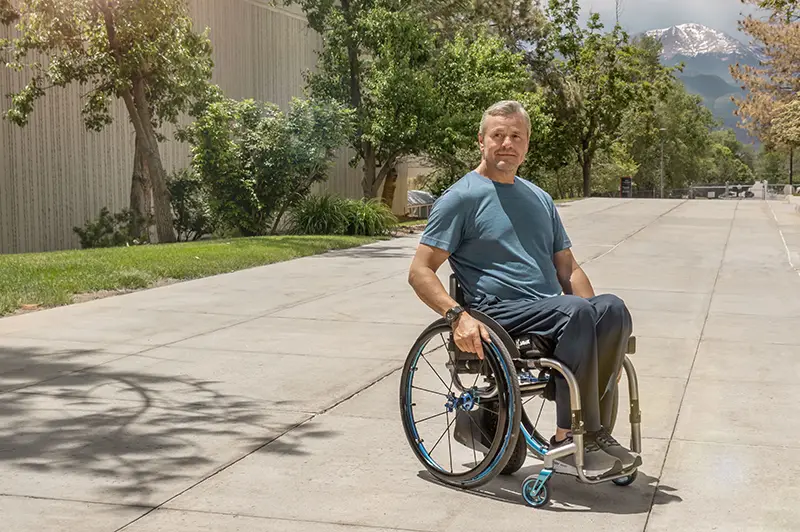An active rider constantly propels their wheelchair over various terrains and distances throughout the day, increasing the potential for repetitive strain injury to the shoulders, elbows, and wrists. Power assist devices for wheelchairs provide a method to reduce push strokes, increase efficiency, save energy, and protect the shoulders. The goal of reducing those strokes takes on new meaning when the Empulse R90 is put into practice for an active rider who is also a competitive athlete.

Mike is an athlete who has participated in many road races using a hand cycle or racing chair. His true competition, however, is as a para shooter. Mike is a pistol shooter and started training for competition in 2013, being named the USA shooting Paralympic Athlete of the Year in 2014 and 2015. He participated in the Paralympic Games in Rio de Janeiro in 2016 and continues to be active in the sport, recently winning three events at the 2025 USA Shooting Nationals in Alabama. He won the National Championship in P3 Mixed 25-meter Sport Pistol SH1 and also won the P1 Men's 10-meter air pistol event in the wheelchair division.
Mike competes in the SH1 division, which means he shoots without a stand for support, relying on his trunk and shoulders to provide proximal stability while he shoots. He rides an RGK Octane FX equipped with a Ride Designs Java Cushion and Custom Back for pressure relief and pelvic/spinal support. He uses an Empulse R90 to navigate airports and event centers. Mike states, "This has made all the difference for me in relieving stress on my shoulders and being well rested for the competitions."
Mike's goal is to preserve his upper extremities for his shooting events. The R90 allows Mike to get through the long distances he has to cover when he is traveling through the airport, as well as the venues hosting the shooting events. The fact that the R90 is placed in a position that stays within the footprint of the wheelchair and complements the center of gravity configured on his wheelchair helps him preserve his shoulders while allowing him to maneuver through crowds without having to worry about someone tripping over the rear wheel. Mike also appreciates that he can raise the wheel when he wants to propel himself. When Mike sets up for his shoot, he is confident that his shoulders are not fatigued from having to push for long distances and over surfaces with more rolling resistance, such as carpeting.
As Mike ages, shoulder preservation is a key factor when choosing his mobility equipment. Mike chose an R90 to assist with his mobility, which allows him to stay in an ultralight manual wheelchair for everyday use as well as competition. The RGK Octane FX folds for ease of travel, weighs less than 9 pounds, and the center of gravity was determined to be the best position for propulsion.

In summary, the combination of an optimally configured ultralight wheelchair with the R90 provides the opportunity for efficient propulsion and preservation of the shoulder girdle to allow Mike to stabilize his arm and save his strength for competition.

References
- Caspall, J.J., Seligsohn, E., Dao, P.V., & Sprigle, S. (2013). Changes in inertia and effect on turning effort across different wheelchair configurations. Journal of Rehabilitation Research & Development. 50(10), 1353-1362.
- Choukou, Best, K. L., Potvin-Gilbert, M., Routhier, F., Lettre, J., Gamache, S., Borisoff, J. F., & Gagnon, D. (2021). Scoping review of propelling aids for manual wheelchairs. Assistive Technology, 33(2), 72–86. https://doi.org/10.1080/10400435.2019.1595789
- DiGiovine, C., Rosen, L., Berner, T., Beltz, K., Roesler, T., & Schmeler, M. (2012). RESNA Position on the Application of Ultralight Manual Wheelchairs. RESNA. Retrieved from https://www.resna.org/.
- Khalili, E., A., Wood, A., Van der Loos, M., Mortenson, W. B., & Borisoff, J. (2021). Perceptions of power-assist devices: interviews with manual wheelchair users. Disability and Rehabilitation: Assistive Technology, ahead-of-print (ahead-of-print), 1–11. https://doi.org/10.1080/17483107.2021.1906963
- Lin, J.-T., & Sprigle, S. (2019). The influence of operator and wheelchair factors on wheelchair propulsion effort. Disability and Rehabilitation: Assistive Technology, 1–8. doi: 10.1080/17483107.2019.1578425
- Paralyzed Veterans of America Consortium for Spinal Cord Medicine (2005). Preservation of upper limb function following spinal cord injury: a clinical practice guideline for health-care professionals. The journal of spinal cord medicine, 28(5), 434–470. https://doi.org/10.1080/10790268.2005.11753844
- Rehabilitation Engineering & Assistive Technology Society of North America. (2022). RESNA Position on the Application of Ultralight Manual Wheelchairs. Retrieved from https://www.resna.org/
With over 40 years of clinical practice as an OT, Jessica Presperin has worked in all sectors of the wheelchair and seating industry as a master clinician, supplier, manufacturing consultant, design representative, and educator. Dr. Presperin was a pioneer in the development of the profession of wheelchairs and seating in the 1980s and has spent the last two decades contributing to the research world to demonstrate evidence for knowledge translation in the clinic, advocacy, and product development. She is a RESNA and AOTA Fellow, serves on the Clinician Task Force, the Seating and Wheeled Mobility Committee for AOTA, and has shared her experiences internationally through publications and presentations.